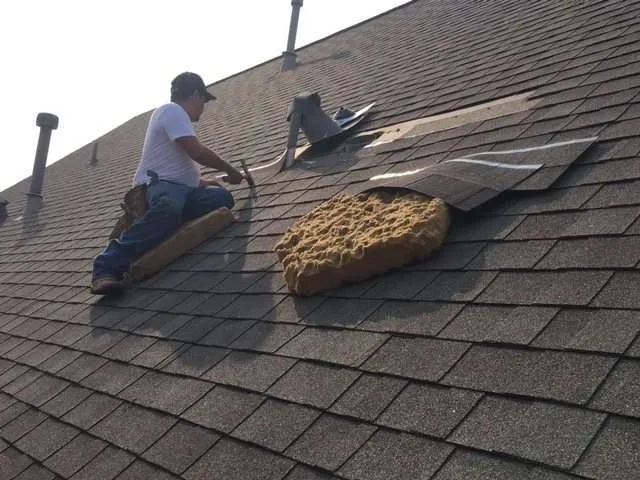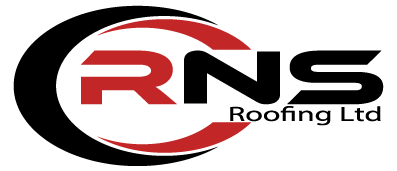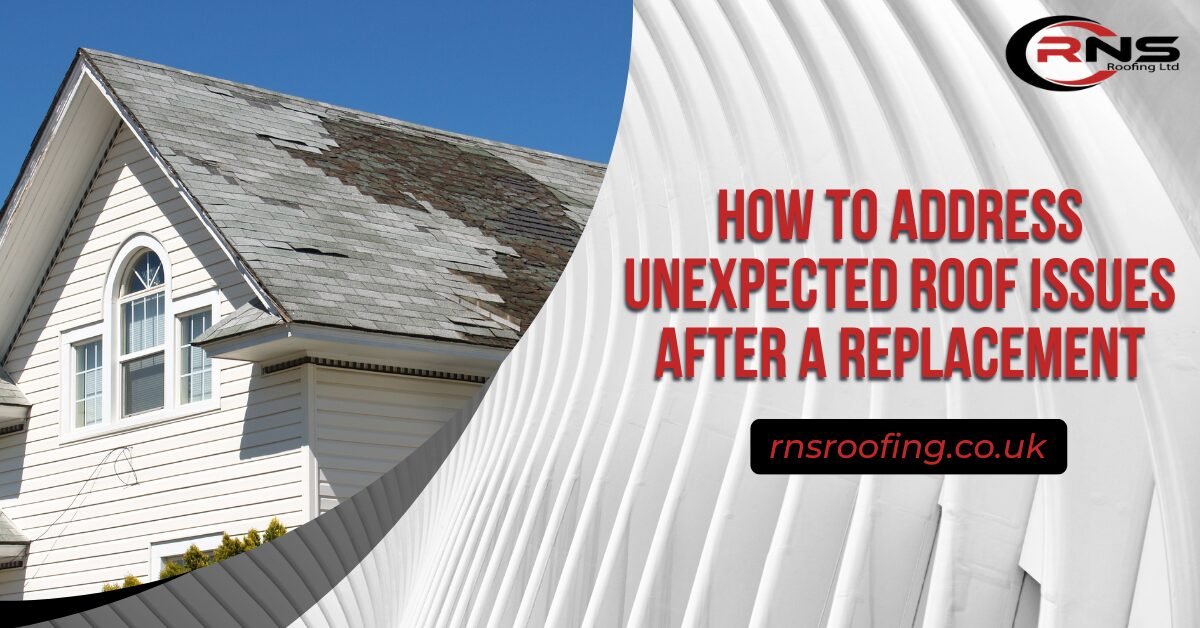Roof replacements, a major expensive investment, aim to increase your home’s strength. Even with a new roof, though, unexpected issues can still occur and, if ignored, could result in emergencies. To protect their investment and guarantee that their home remains secure, homeowners must know how to Address Unexpected Roof Issues After a Replacement. Today, I will examine typical unexpected roof problems that arise after replacement and provide practical fixes to deal with them.

Common Unexpected Roof Issues After a Replacement:
Roof Replacement is a job that is frequently done to raise a property’s overall value, safety, and visual appeal. But even after a careful replacement procedure, unexpected issues can still occur. These roofing problems can move from little to serious problems that must be handled immediately. Here are some of the Common issues Of Roofs:
Leaks and Water Damage:
- Leaks can still happen even with a new roof because of poor installation, broken flashing, or insufficient seals around vents, chimneys, or skylights.
- If water intrusion is not stopped right away, it can cause significant harm to the insulation, the roof structure, and even the interior walls and ceilings.
High Winds and Storm Damage:
- Extreme weather, such as strong winds, hail, or heavy rain, can strain newly replaced damaged roofs, particularly if the materials aren’t high-quality or the installation did not occur correctly.
- Shingles have the potential to lift, fracture, or come loose, leaving the roof deck underneath open to water penetration and additional damage.
Faulty Flashing:
- Flashing is important to keep water out of vulnerable parts of the roof, like valleys, eaves, and junctions with walls or chimneys.
- Water can flow behind a broken or improperly built flashing, compromising the roof’s stability and leading to leaks.
Ice Dams:
- Ice dams on the margins of roofs can develop in colder climes, preventing the proper drainage of melting snow and ice.
- Ice dams can cause water to back up under the shingles, which can result in leaks and can harm the interior and structure of the roof.
Poor Ventilation:
- A build-up of moisture in the attic due to inadequate ventilation can cause mould growth, wood rot, and a rapid breakdown of roofing materials.
- Maintaining the integrity of the roof and making sure the house is as energy-efficient as possible depends on proper ventilation.
Tree Damage:
- Closely spaced trees or overhanging branches near the roof can sustain harm, particularly in storms or strong winds.
- Shingles may get punctured or dislodged by falling branches or debris, which could result in leaks and structural damage.
Animal Intrusions:
- Pests like birds, raccoons, squirrels, and others could try to get into the attic or roof space if there are gaps or weak spots.
- Animal damage can weaken the roof’s structure and provide openings for pests and water to enter the house.
Steps to Address Unexpected Roofing Problems after a Replacement
Even with a new roof replacement investment, unexpected issues can still occur and, if ignored, could result in emergencies. For homeowners to safeguard their investment and preserve the foundational strength of their property, they must understand how to handle these unexpected issues as soon as they arise. After a replacement, follow these steps if you have unexpected roof problems:
Identify the Problem:
- The first step is to identify the exact problem causing damage to your roof. This can be a leak, broken shingles, improper flashing, or any other readily apparent damage.
- To determine the origin and scope of the issue, do a comprehensive examination from both the inside of your attic and the outside of your house.
Assess the Severity:
- Assess the severity of the issue to figure out whether it needs to be addressed right away or if it can wait for expert assistance to arrive before needing to be handled.
- To stop the situation from getting worse, serious leaks, significant damage, or damaged structural integrity should be handled as emergencies and dealt with immediately.
Document the Damage:
- To prove the damage for insurance purposes and to support any warranty claims, take pictures or videos of the roof problem.
- To help with future insurance claims or disputes, keep thorough records of the day, time, and circumstances surrounding the problem’s emergence.
Contact a Professional Roofer:
- Consult a reliable roofing contractor or expert with experience managing roof repairs and replacements.
- Select a licensed and insured contractor with a track record of providing excellent work and client satisfaction.
For Professional Contractors Call Now: 07469 582272
Schedule an Inspection:
- Make arrangements for the expert roofer to do a thorough roof inspection in order to measure the level of damage and choose the best course of action.
- Ensure the inspection covers all aspects of the roof system, such as vents, flashing, shingles, and supporting structures.
Address Immediate Repairs:
- Authorize the necessary repairs immediately if the problem presents a serious risk to your home’s foundation or its users’ safety.
- Before a permanent solution can be put into place, temporary measures may be taken to lessen further damage.
Discuss Warranty Coverage:
- Check the details of your roof warranty to see if repairs are covered and if the problem with your roof is the result of poor-quality materials or workmanship.
- To begin a warranty claim and arrange for the required repairs or replacements under the warranty agreement, get in touch with the manufacturer or installation.
Implement Preventive Measures:
- Collaborate with your roofing contractor to determine any weaknesses or underlying problems that might have increased the issue.
- Reduce the likelihood of future roof problems by implementing preventive steps like enhancing ventilation, strengthening flashing, or trimming overhanging branches.
Conclusion:
Unexpected roof issues can still occur even after a replacement, but they can be solved effectively with quick action and good maintenance. Homeowners can protect their investments and guarantee the long-term integrity of their roofs by being aware of typical issues and taking the recommended actions. Remember that regular upkeep is essential to having a strong, solid roof that will protect your house for many years to come.
FAQs:
What happens if it rains while getting a new roof?
Because of possible material damage and safety issues, construction work on a new roof may be delayed if it rains throughout the project. Water seeping into exposed locations might lead to structural problems that must be repaired. For appropriate installation and to avoid further issues, contractors might need to cover the roof with tarps or wait for the weather to pass before continuing the work.
Why Do I Have Ceiling Damage After My Roof Replacement?
Following a roof replacement, ceiling damage may result from poor installation that allows leaks to occur, insufficient sealing, or structural problems that were overlooked during the replacement procedure. To identify the underlying reason and take immediate action to stop additional damage, it is crucial to examine the craftsmanship and materials utilized.
How much damage does a roof need to be replaced?
A full roof replacement isn’t solely based on the amount of damage. While extensive leaks, missing shingles, or structural issues point towards replacement, widespread wear like heavy granules in gutters and nearing the roof’s lifespan also necessitates a professional inspection. Consulting a qualified roofer is vital for an accurate assessment and recommendation on repair or complete replacement.

